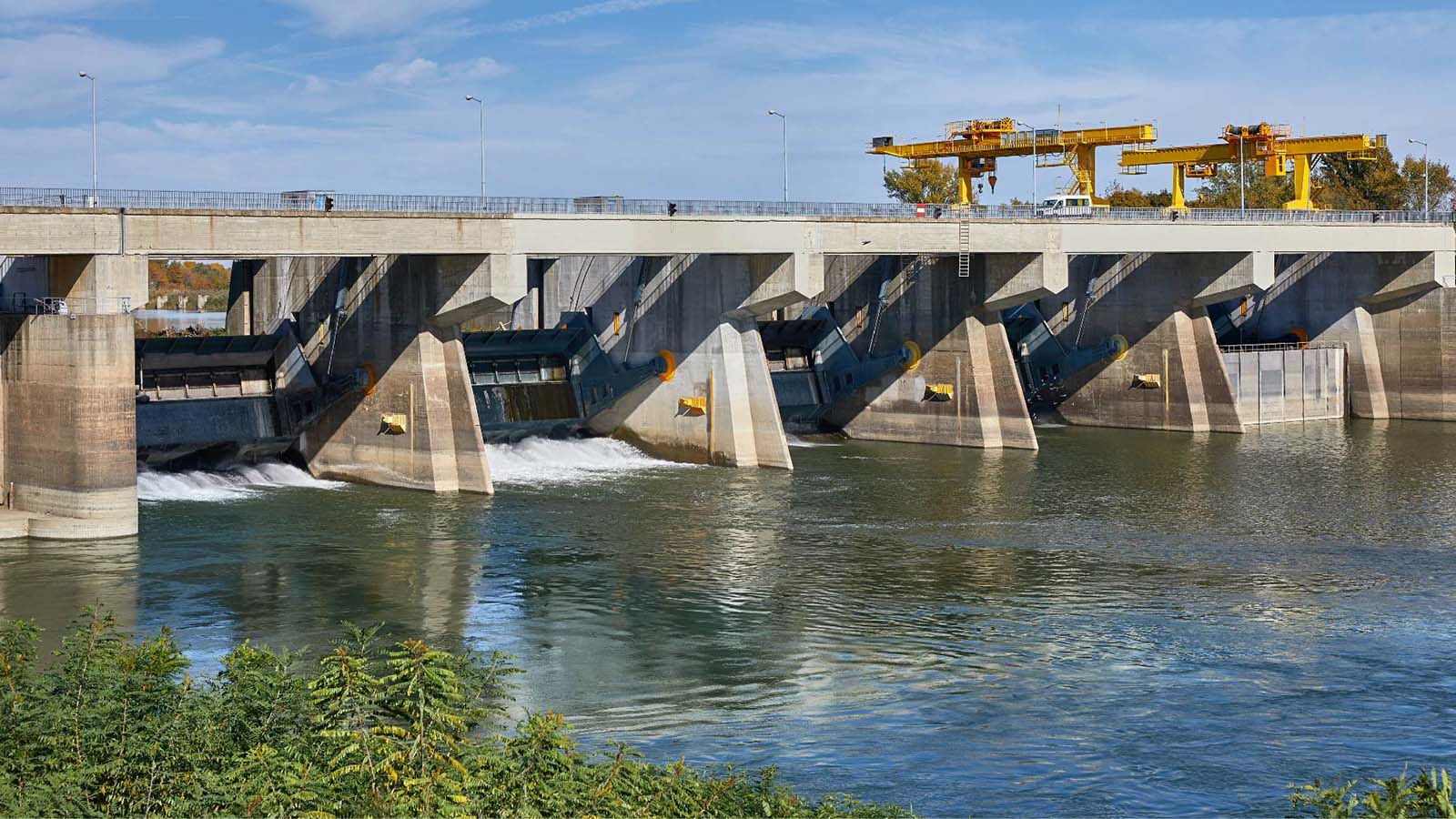Greenhouse Gas Emissions Scope 2: Indirect Emissions From Purchased Energy
Never miss a thing.
Sign up to receive our insights newsletter.

Is Your Business Ready to Measure and Report Its Greenhouse Gas Emissions?
Scope 1 emissions are direct emissions under the control of your company. They are straightforward to inventory, and the opportunities to reduce them are under your control. But they aren’t the only source of emissions resulting from your company’s day-to-day operations.
Purchased electricity, steam, heating and cooling also produce greenhouse gas (GHG) emissions. These energy sources fall into the category of indirect emissions of GHGs for the purchasing company. Indirect emissions, or Scope 2 emissions, must be accounted for in your company’s GHG inventory. Scope 2 emissions are collectively categorized as electricity. Here we will discuss Scope 2 emissions, how to account for them, the differences between local- and market-based emissions, where to find emissions factors and how to reduce Scope 2 emissions.
What Are Scope 2 Emissions?
The organizational and operational boundaries established during your Scope 1 emission inventory also apply to Scope 2 emissions. Scope 2 emissions take place off-site but are counted by the company using them. Generally, transportation and loss of emissions are not considered in Scope 2 inventories.
Scope 2 emissions are purchased from, and managed by, an off-site entity, such as an electric company, a localized grid or energy district. They are an accounting of your organization’s energy use even though the GHG emissions occur off-site and are considered indirect emissions associated with the purchase of energy, such as electricity or steam. Indirect emissions also occur when heat from hot water or cooling from cold water are delivered to the company. The EPA and others place steam and heating and cooling from hot or cold water under one category: electricity.
Electricity can be generated from multiple sources, such as the burning of fossil fuels, hydropower plants, wind plants and solar panels. Power generated by the consumption of fossil fuels produces carbon dioxide, methane and nitrous oxide, which are all GHGs.
How to Account For Scope 2 Emissions
There are two methods to account for Scope 2 emissions: location based and market based. The EPA recommends that companies should report GHG emissions for both methods in its inventory. The location-based method considers the average emission factors for electrical grids, while the market-based method considers contractual arrangements.
The calculation of emissions for either method is the same. The amount of energy purchased, as determined by utility bills, is multiplied by an emission factor appropriate to the purchased electricity. This converts the used energy into the mass of GHGs emitted. The most accurate way of determining the amount of energy purchased is the reported energy units, such as kilowatt-hours (kWh) or megawatt-hours (MWh).
Not all purchased energy is the same. Emission factors are used to reflect the source, such as renewable or fossil energy, and the efficiency of converting that input energy to useful energy output. Emissions factors are dependent on the accounting method.
Location-Based Emission Factors
There are three main location-based emissions factors to consider:
- Direct line – electricity that does not go through a grid but is directly supplied.
- Regional – electricity that is purchased through a grid and reported based upon geographic location. The Emissions & Generation Resource Integrated Database (eGRID) is an EPA publication that tracks subregion emission factors.
- National – average grid emissions factors are published by national governments or the International Energy Agency.
Market-Based Emission Factors
There are four unique market-based emissions factors; regional and national factors can be used if no other information is available.
- Energy Attribute Certificates. These certificates from the supplier carry an emission factor. Examples of certificates include renewable energy certificates (RECs) or Guarantees of Origin (GOs). These are often zero for renewable energy, but sometimes they are non-zero, such as the case in which biomass is used in energy production.
- Contracts. Contracts to purchase power at a specific generating facility, such as power purchase agreements (PPAs), have emission factors associated with the facility.
- Supplier–Specific Emissions. This factor is provided by the supplier and must include all electricity it delivers, including electricity it generates and purchases.
- Residual Mix. This is a catchall for anything that remains after certificates, contracts and supplier-specific factors have been claimed. This factor avoids double counting but is not yet widely available. Companies should report the lack of residual mix factors and, when they are not available, use national and regional factors.
What Are the Business Benefits Associated With Performing a Scope 2 GHG Inventory?
While there are regulatory and legal reasons to ensure that your company performs an accurate inventory of Scope 2 GHG emissions, the GHG Protocol has also pointed to several key advantages. Specifically, knowing where your company stands is the first step in reducing emissions and often leads to higher efficiency and potentially significant cost savings. Companies that find unique and innovative approaches to reducing GHG emissions can benefit from increased sales and customer loyalty from environmentally conscious consumers. Proactive, accurate and honest accounting for GHG emissions, such as the true source of Scope 2 emissions, demonstrates environmental stewardship and can improve stakeholder relations. Finally, adopting best practices for accounting and reducing GHG emissions helps differentiate one company from another in the increasingly environmentally conscious marketplace.
Reducing Scope 2 Emissions
Environmentally conscious consumers are driving the increasing number of options available to reduce GHG emissions in the Scope 2 category. Renewable energy solutions – wind, hydropower, geothermal, solar – are making up a larger percentage of the energy that gets fed to the electrical grid. While there is no way to separate energy from source once it reaches the grid, RECs or PPAs provide information on the greenness of the energy supplied for tracking purposes.
On-site power generation is another option. Installing solar panels, windmills or fuel cells on-site will reduce Scope 2 emissions and contribute negligibly to Scope 1 emissions. On-site power generation also reduces Scope 3 emissions associated with energy transport and power losses.
Upgrading heating, cooling and steam systems to more efficient systems can also lead to less wasted electrical energy. Occupancy sensors for lights and adopting company-wide energy-saving best practices, such as turning off and unplugging computer equipment at the end of a workday, are cost effective in the amount of energy purchased and because they reduce waste.
Like Scope 1 emissions, achieving net zero emissions won’t happen overnight. During transitions to greener electricity or when not all Scope 2 emissions can be eliminated, carbon offsets can be purchased. Carbon offsets compensate for these kinds of emissions by investing in programs, such as reforestation, that sequester carbon dioxide and remove it from the environment.
Double Counting
The separation of Scope 1 and 2 may not be obvious in cases where companies generate their own electricity and perhaps sell some of it to an electrical grid. For example, companies that generate some of the electricity on-site may have remote office buildings that strictly purchase energy, sometimes from the same electrical grid to which they sell electricity.
To avoid double counting, companies should consider all on-site electrical needs as supplied by their own facilities with no Scope 2 emissions – only Scope 1. Then the grid-consuming remote office building or facility should secure a contract with the on-site facility as it would do for an off-site supplier. The remote building would then report this as Scope 2 with no associated Scope 1 emissions.
How Can Weaver Help?
Whether your company is just beginning to consider the benefits of getting involved in green energy segments or you’re a current player seeking to expand your markets, Weaver has the perspective and capability to help you succeed.
The environmental programs we assist with are rooted in managing human impact on the environment, reducing GHG emissions and increasing sustainability.
Our team of energy professionals brings a wide variety of backgrounds to help clients solve problems. In addition to the CPAs you would expect, we employ registered professional engineers, chemists and environmental lawyers. They combine years of experience in traditional oil and gas with up-to-the-minute understanding of emerging renewable markets.
Within the renewable fuels industry, our Energy Compliance Services team is a dominant force, helping businesses navigate compliance with regulations from agencies such as the EPA, Environment and Climate Change Canada, the U.S. Customs and Border Protection Agency and the California Air Resources Board, as well as agencies in other states and provinces. We help companies of all sizes understand regulatory requirements, maintain corporate compliance, and identify and maximize benefits that might be available under “green” programs.
Many of the world’s leading energy companies, across all segments of the industry, are our clients. We understand the regulatory and technical issues related to sustainable or low-carbon energy as well as the financial issues involved in carbon sequestration tax credits and green finance.
©2023
Weaver’s Greenhouse Gas Emissions series takes a deep dive into the three different types of emissions, called “scopes” used to delineate direct and indirect sources of greenhouse gas emissions. This is one in a series of related posts:

